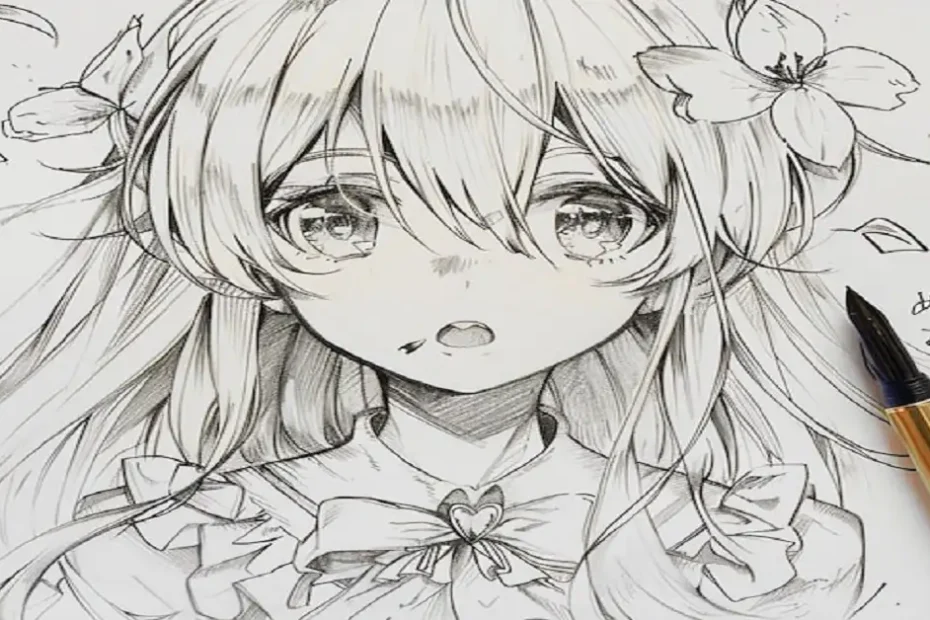Anime, a style of animation that originated in Japan, has captivated audiences worldwide with its unique art style, compelling storylines, and rich cultural elements. The art of drawing anime is both a challenging and rewarding endeavor that combines traditional drawing techniques with specific stylistic conventions unique to this genre. This guide will take you through the fundamental aspects of drawing anime, from understanding the basics to mastering more complex elements.
Understanding the Basics of Anime Art
1. Distinctive Features of Anime: Anime characters are known for their exaggerated features, particularly the large, expressive eyes, small mouths, and distinctive hair styles. These features are not just stylistic choices but are used to convey a wide range of emotions and personality traits.
2. Tools and Materials: While you can start with basic pencil and paper, many artists eventually move on to digital drawing tablets and software like Adobe Photoshop, Clip Studio Paint, or Procreate. Digital tools offer greater flexibility and ease of making corrections.
3. Anatomy and Proportions: Understanding human anatomy is crucial, even for exaggerated anime styles. Start with studying real human proportions, and then learn how to stylize them. Anime characters often have longer limbs and larger heads in proportion to their bodies compared to real humans.
Step-by-Step Guide to Drawing Anime Characters
1. Sketching the Basic Structure: Begin with a rough sketch. Draw the head using a circle as the base and then add guidelines for facial features. Use simple shapes to outline the body, such as circles for joints and lines for limbs.
2. Drawing the Face:
- Eyes: The eyes are the most defining feature. Start with drawing the upper and lower lash lines, then add the iris and pupils. Don’t forget the highlights in the eyes to give them a lifelike sparkle.
- Nose and Mouth: Anime noses are typically small and understated. The mouth varies greatly but is often a simple line or slight curve.
- Hair: Anime hair can be very complex. Start with the general shape and direction, then add individual strands and details.
3. Adding Details to the Body:
- Torso and Limbs: Refine the basic shapes into more detailed forms. Pay attention to the joints and muscle structure.
- Hands and Feet: These can be challenging. Practice drawing them from various angles and poses to improve your skill.
4. Clothing and Accessories: Clothing in anime often defies the laws of physics with its dynamic flow and folds. Study how fabric moves and drapes over the body. Accessories like weapons, jewelry, or bags should be drawn to match the character’s personality and role.
Mastering Advanced Techniques
1. Shading and Lighting: Proper shading can bring your anime drawings to life. Understand the light source in your drawing and apply shadows accordingly. Techniques like cross-hatching or gradient shading can add depth.
2. Dynamic Poses: To make your characters more lively and expressive, practice drawing dynamic poses. Use action lines to guide the movement and make sure the pose looks natural.
3. Backgrounds and Composition: While characters are the main focus, backgrounds can add context and enhance the story. Learn perspective drawing to create realistic settings and experiment with different compositions to see what works best for your scene.
Common Mistakes and How to Avoid Them
1. Proportion Errors:
- Solution: Regularly compare your drawing to references. Use guidelines to keep proportions in check.
2. Stiff Poses:
- Solution: Practice gesture drawing. Capture the essence of a pose in a few lines before adding details.
3. Overcomplicating Details:
- Solution: Focus on the overall composition first. Add details gradually and ensure they enhance, rather than clutter, your drawing.
Tips for Continuous Improvement
1. Study from References: Look at both real-life photos and anime artwork. Analyze how different artists approach anatomy, shading, and composition.
2. Practice Regularly: Consistency is key. Set aside time daily or weekly to practice and experiment with new techniques.
3. Seek Feedback: Join online communities, such as DeviantArt, Reddit, or specialized anime art forums. Share your work and be open to constructive criticism.
4. Learn from Tutorials: Many professional artists share tutorials on platforms like YouTube or Patreon. These can provide valuable insights and techniques.
Conclusion
Drawing anime is an art form that blends creativity with technical skill. By understanding the fundamental principles, practicing regularly, and continuously seeking to improve, you can develop your unique style and bring your anime characters to life. Whether you’re drawing for fun or aiming to become a professional artist, the journey of mastering anime art is filled with endless possibilities and opportunities for self-expression.
